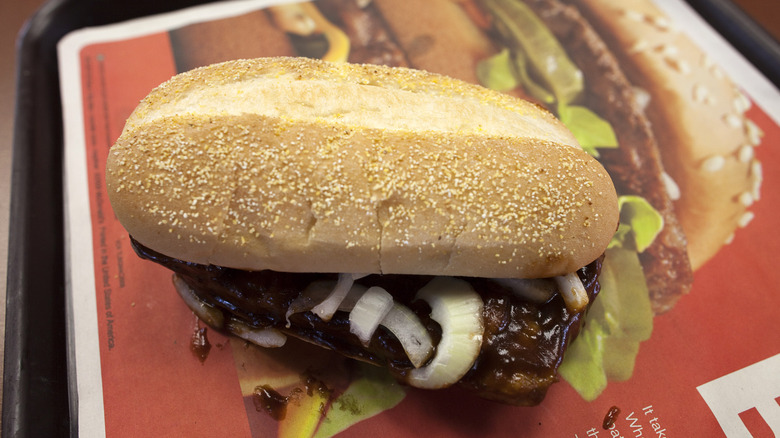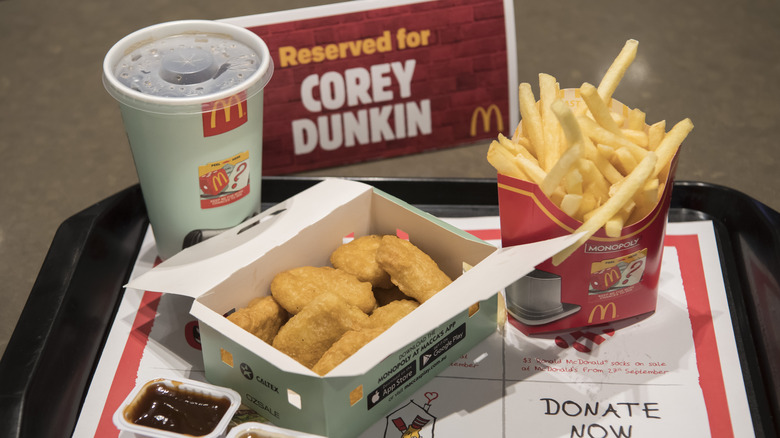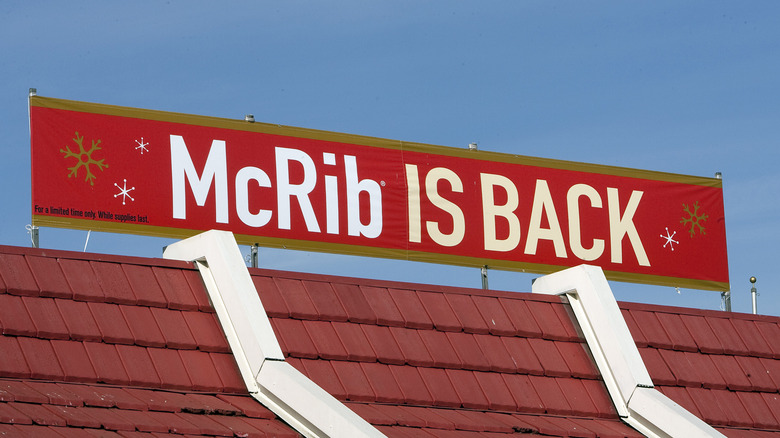How The US Military's Meat Research Helped Birth McDonald's McRib
Few fast food items regularly capture the public's imagination quite like the McRib. Maybe it has something to do with the fact the McRib is only brought back to our lives once per year, like a greasy, barbecue sauce-drenched comet, but there's something about McRib season that really does feel oddly magical.
Contrary to popular belief and urban legend, the McRib is not made with whatever parts get scraped off the slaughterhouse floor (that's basically what scrapple is, but that's another conversation entirely). The McRib's construction contains a shocking number of ingredients and is itself the result of intense experimentation in food science. Somehow, though, the story is even more bizarre than that implies: The creation of the McRib is based on U.S. military research. No, this wasn't because the army was developing some sort of pork bomb. They were, however, cooking up something much less explosive (but arguably far more impactful to society): restructured meat.
McNuggets were first developed from restructured meat
In the 1960s, research scientists sought to solve the cost efficiency problem in MREs, or "Meals Ready to Eat." To this end, they devised a novel idea: What if they took edible but generally discarded cuts of meat left aside during food processing and found a way to recompress them into a solid structure using animal protein as a meat glue?
It's easy to forget now, but chicken McNuggets weren't always part of the McDonald's menu. The restaurant chain's origins as a barbecue restaurant meant that burgers were always its bread and butter. McNuggets, meanwhile, weren't even created until 1979 — and the technology for them wouldn't have existed during McDonald's early years.
Their efforts bore fruit, though not necessarily in the way they intended. In 1979, in response to rising beef prices and the release of government dietary suggestions that Americans eat fewer cows, McDonalds' executive chef Rene Arend created the chicken McNugget out of restructured chicken meat. But McDonald's didn't stop there.
The problem was McNuggets were so popular they set off a chicken shortage — so the company sought to create another beef alternative using the same methods. Arend's answer was the McRib, using pork shoulder and meat glue (along with some clever shaping and a slathering of barbecue sauce) to make the sandwich that looks like a rack of ribs. There was just one problem: Diners didn't like it.
The success of the McNugget led to the McRib
We take for granted now that the McRib is popular any time it shows up, but when it debuted in 1981, it was just a regular menu item — and one that didn't last long. People didn't get the idea of a barbecue pork sandwich, so it essentially disappeared from McDonald's menus just a few years later. But then the company started sporadically bringing it back and noticed that it was popular when they did so. It's been making regular appearances on the menu ever since, usually in the fall season.
We don't actually know why the company keeps bringing the McRib back occasionally rather than keeping it as a full-time menu item (the prevailing theory is they do it when pork prices are cheaper). But we do know that without the efforts of the military-industrial complex, we wouldn't get to enjoy the McRib every fall season.


